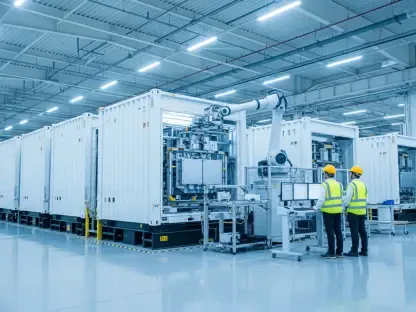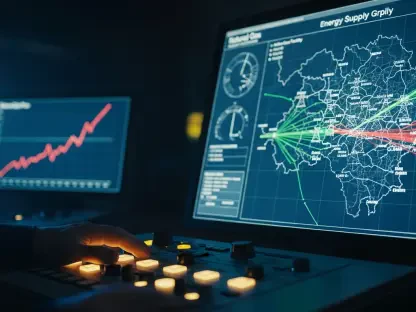In today’s evolving energy landscape, Christopher Hailstone stands out for his extensive expertise in energy management, renewable energy, and electricity delivery. As a seasoned utilities expert, his insights are invaluable for understanding grid reliability and the future of energy in America. In this interview, Christopher discusses crucial themes like the role of renewables in meeting the power demands driven by AI, the significance of diverse energy sources, and the importance of energy pragmatism.
Can you elaborate on why renewables are considered vital to meeting the growing power demand driven by AI and reshoring of manufacturing?
Renewables are becoming indispensable in the effort to meet escalating power demands, especially as AI and manufacturing reshoring increase electricity consumption. The beauty of renewables lies in their scalability and the rapidly decreasing cost trajectory, making them a timely and cost-effective solution. Solar and wind power, coupled with advancements in battery storage, are becoming more efficient and can be deployed relatively quickly compared to other energy sources, which is crucial given the urgency of demand.
NextEra’s energy portfolio is diverse. How do you see the role of each energy source, like renewables, gas, and nuclear, in the future energy mix?
Each energy source in NextEra’s portfolio plays a fundamental role. Renewables are at the forefront due to their environmental benefits and versatility. Gas, although traditionally a bridge fuel, offers reliability and can support grid stability during transition phases. Nuclear energy, contributing a smaller percentage, provides a stable base load electricity source with low emissions. The interplay of these energies ensures that we not only meet current demands but also build a sustainable future energy landscape.
Why is the concept of a “bridge” energy source significant, and how have renewables taken on this role from natural gas?
The idea of a “bridge” energy source is crucial for transitioning from traditional fossil fuels to a more sustainable grid. Historically, natural gas filled this role due to its lower emissions compared to coal and its ability to provide consistent power. However, as renewables have surged in both capacity and capability, they now offer a viable bridge. This shift is driven by the need to address climate concerns without sacrificing energy reliability and cost-effectiveness during the transition period.
With an estimated demand of over 450 GW by 2030, what are the key strategies NextEra is implementing to meet this target?
To meet this rising demand, NextEra is focusing on expanding its renewable energy projects and enhancing energy storage capabilities. They’re investing heavily in solar and wind farms and exploring innovative battery storage solutions to ensure stability and supply continuity. Additionally, they’re enhancing grid infrastructure to better integrate diverse energy sources, ensuring that increased demands are met sustainably and efficiently.
Could you explain what you mean by “energy realism” and “energy pragmatism”?
“Energy realism” acknowledges the immediacy and magnitude of current electricity demands, urging a recognition that no single source can suffice. “Energy pragmatism” involves adopting a practical approach in exploring all available energy solutions without ideological biases. It’s about being open-minded and integrating various sources based on their merits, ensuring that we have a balanced, diverse energy mix to meet our needs.
How do you interpret the balance between different energy sources without picking winners and losers?
A balanced energy mix requires an understanding that various sources offer unique advantages. Rather than viewing these sources in competition with each other, it’s more fruitful to see how they can complement one another. For instance, renewables can provide environmentally friendly solutions while natural gas can ensure reliability during peak demands. By leveraging the strengths of each, we can create a resilient and versatile energy ecosystem.
What role do policy and regulation play in supporting a diverse range of energy sources, according to your perspective?
Policy and regulation are pivotal in driving the energy transition. They can incentivize investments in emerging technologies, facilitate research and development, and ensure a level playing field where diverse energy sources can thrive. Sound policies also provide certainty for investors and help streamline the integration of renewable energies into existing infrastructures.
How do cost and construction time factor into the decisions around expanding gas and nuclear capacity?
Cost and construction time are major considerations for any energy project. Gas plants are generally cheaper and faster to build compared to nuclear facilities, making them appealing for quick power solutions. However, as costs for renewables continue to drop and construction techniques evolve, these metrics are becoming more favorable. Long-term, sustainable decisions require weighing these factors against environmental impacts and future demand forecasts.
Can you discuss the role of AI data centers in the projected electricity demand growth in the U.S.?
AI data centers are becoming massive electricity consumers as they support next-generation computing needs. As AI continues to advance, the data processed by these centers increases exponentially, placing a huge demand on power systems. In many respects, they symbolize both a challenge and an opportunity—driving power demand while pushing innovations in energy efficiency and smart grid technologies.
How do renewables complement other energy sources in powering next-generation computing and AI advancements?
Renewables offer a sustainable power option for the rising needs of AI and next-gen computing. Their ability to be deployed close to consumption points minimizes transmission losses. When coupled with intelligent grid solutions, they can provide the necessary reliability and efficiency. As tech developments continue, integrating renewables with other sources, like gas and nuclear, offers a balanced approach to powering advanced computing reliably and sustainably.
How critical is it for the U.S. to embrace a multifaceted energy strategy, especially in light of AI and manufacturing reshoring?
Adopting a multifaceted energy strategy is essential at this juncture. The reshoring of manufacturing and AI’s expansion requires varied energy solutions to ensure adequate, reliable supply. Single-source dependencies could lead to vulnerabilities and inefficiencies. Instead, by integrating renewables, gas, and nuclear, the U.S. can ensure energy security, economic efficiency, and environmental responsibility.
What challenges do you foresee in aligning energy policy with technological advancements in energy generation?
Aligning energy policy with technological progress presents challenges like regulatory inertia, where policies lag behind technological capabilities. Additionally, there are technological disparities that regulations might not adequately address. Moreover, rapidly changing tech landscapes require flexible policy frameworks that can adapt without stifling innovation or discouraging investments in emerging technologies.
Could you highlight how international energy comparisons, like those from the IEA, influence your approach and planning?
International comparisons provide benchmarks and best practices, facilitating informed strategies and goal setting. The IEA’s analysis helps us understand global trends and the varying impacts of different strategies. This awareness aids in refining approaches and ensuring that U.S. policies and practices are competitive yet cooperative in achieving global energy objectives.
How important are collaborations or discussions with other countries, such as India or Iraq, in shaping the future of energy sourcing and supply for the U.S.?
International collaborations are crucial for knowledge sharing and technology transfer, which can lead to more efficient energy sourcing and supply strategies. Dialogues with other nations allow us to learn from their experiences and successes, fostering innovation and resilience in our energy systems. Such collaborations can also encourage the development of global standards and frameworks, enhancing energy security and sustainability globally.
Do you have any advice for our readers?
Stay informed and be open to the evolving energy landscape. Technological advancements and policy shifts are happening swiftly. Being adaptable and proactive in understanding renewable energy trends and their implications can ensure both economic and environmental benefits. Remember, every small contribution counts when it comes to embracing sustainable energy solutions.









